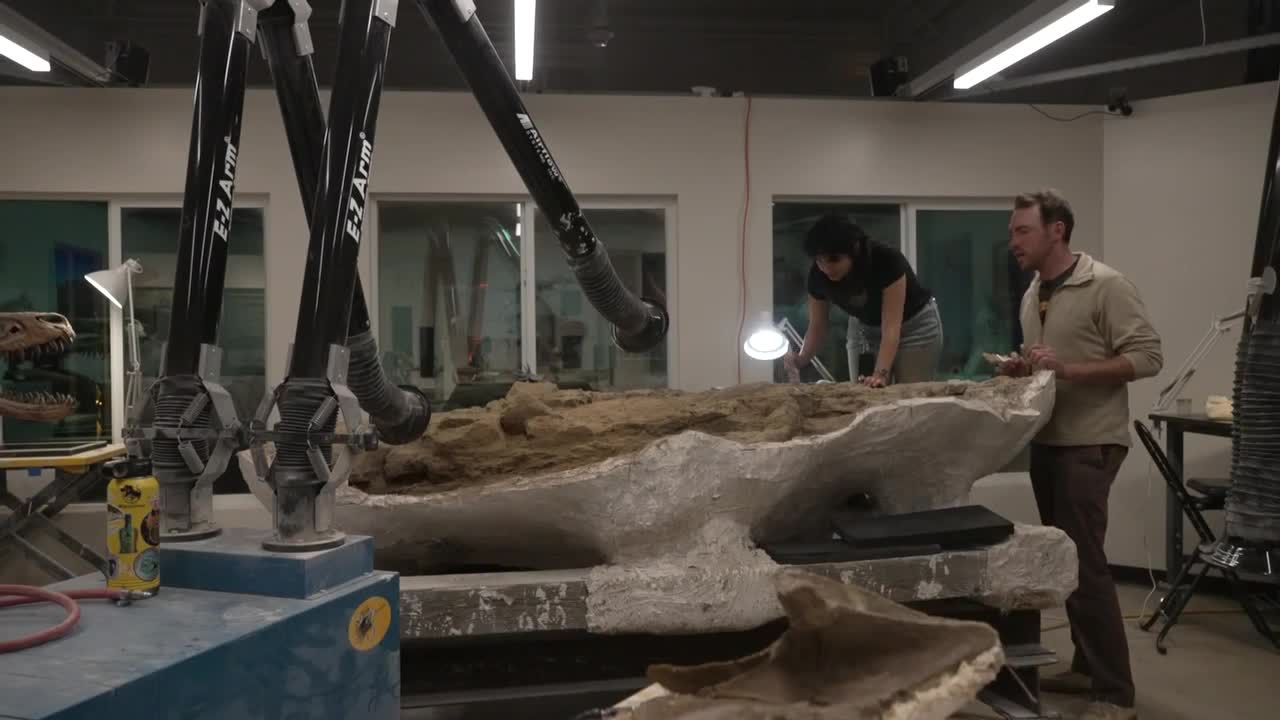DENVER — A team at the Denver Museum of Nature & Science is hard at work piecing together a "remarkably complete" set of Triceratops fossils.
A team of paleontologists and student interns discovered the Triceratops skull, lower jaws and neck during the museum's annual fieldwork in the Hell Creek Formation near Marmath, North Dakota. According to the museum, the roughly 67-million-year-old dinosaur is one of the heaviest fossils ever collected by the museum, second only to its Stegosaurus in the "Prehistoric Journey" preparation lab.

"We brought a ginormous front loader out to collect this fossil, and when they weighed it in the field, it was 5.4 tons," said Salvador Bastien, fossil preparator with the museum. "We're down to somewhere between 7,000 and 8,000 pounds now. Just a light block that's easy to roll around, but we were hoping for a much smaller fossil when we went up there, and, man, we just kept finding bone after bone after bone."

Even after trimming it down, Bastien said the team had to cut a hole in the museum's wall to get the fossils to fit into the room.

Museum visitors can watch the team work on the bones at the "Discovering Teen Rex" exhibit.
"We expect this dinosaur skull to be very three-dimensional, just like the one we have 3D printed right there," Bastien said. "A lot of times, fossils are squished really flat, but based on looking sideways at the dimensions of this — what we call a fossil jacket — this is going to be a pretty blown-up three-dimensional skull."

Fossil preparator Evan Tamez-Galvan said there is a lot of energy surrounding this discovery.
"I do feel that responsibility because there is such high hopes for it. So while it's not on me how the fossil preserved itself, but it is on me to make sure that we take care of it, that we work... in a manner that makes sense as well, that we are being smart about our decisions about where to work, when to work," Tamez-Galvan said.

The skull is expected to be 100% complete. Tamez-Galvan told Denver7 it should take their team about a year to work on this fossil.
For now, she's enjoying every minute of working on this remarkable discovery.
"In terms of emotions, working on it, it's very unreal," Tamez-Galvan said. "Paleontology is not the easiest field to get in and stay in, and so the fact that I've been able to get in, stay in, and been trusted is such an incredible project, it's like a very surreal kind of pinch myself sort of feeling."

Sunday is a free day at the Denver Museum of Nature & Science, where visitors can see the work firsthand and the process that goes into bringing these big bones to display.






